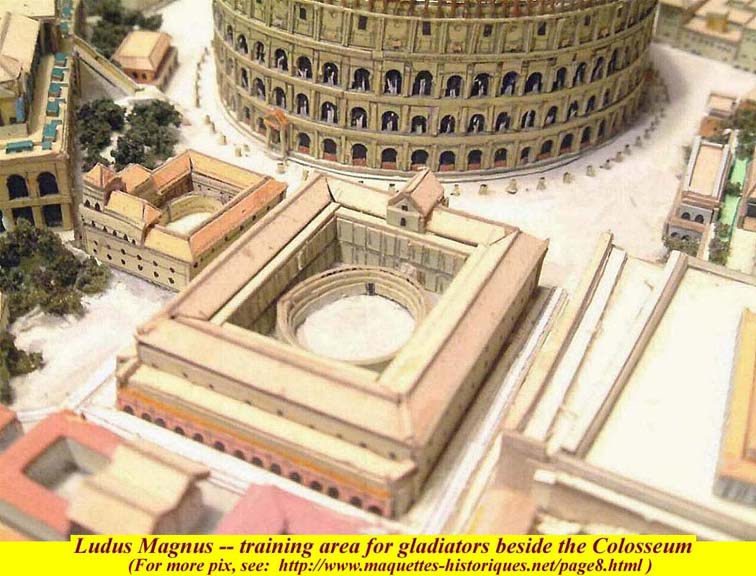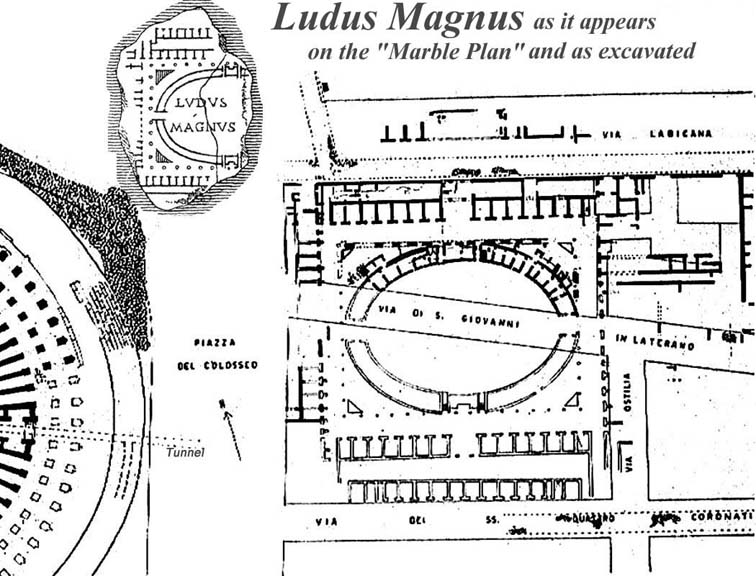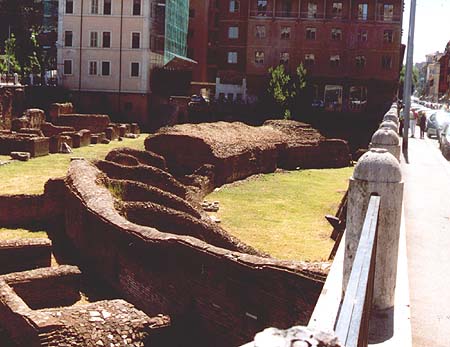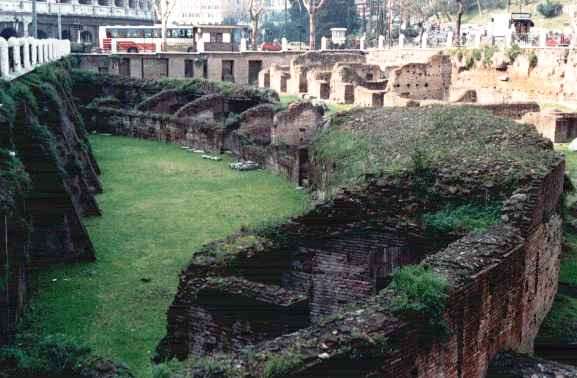

The Ludus Magnus, the largest of the gladiatorial schools in Rome, was built by the emperor Domitian (81-96 AD), whose father and brother, Vespasian and Titus had built the Colosseuin. It is located in the valley between the Esquiline and the Caelian Hills. The visible ruins of the monument belong to a second building stage attributed to the emperor Traijan (98-117), when the level of the school was raised by about 1 1Ú2 m.
The remains of the complex were discovered in 1937, and excavations continued until 1957. The name and construction period of Ludus Magnus are known, thanks to antique sources. It is also shown on one of the fragments of the famous "Marble Plan" of the city(Forma Urbis) which was hung on library wall in the Forum of Peaece (Forum Pacis of Vespasian) in the Severian age (early third century AD). Until the discovery of the ruins in 1937, there were great doubts about where it was located in the general topography of ancient Rome.
To facilitate movement between the Ludus Magnus and the Colosseum, a wide underground gallery was built. The path, with an entrance 2.17 m wide, began under the amphitheater and reached the Ludus at its southwestern corner.

At the center of the Ludus Magnus there was a practice arena surrounded by the steps of a small cavea reserved for a limited number of spectators. The cavea had a four-sided portico, about 100meters per side, with travertine columns. It led to a number of outside rooms, which were used to house the gladiators and mateials needed for performances. Only a few travertine fragments of the colonnade remain, and they have been re-erected where the columns were probably located originally.
In the northwest corner of the portico, one of the four small, triangular fountains has been restored. It lies in the spaces between the curved wall of the cavea and the colonnade. A cement block remained between two brick walls, converging at an acute angle.
Most of the brickwork structures were originally covered by marble slabs that were later removed.
The spectators' entrances to the Ludus Magnus were built on the main axes. The one at via Labicana, at the center of the buildingís northern side, was probably reserved for important people, since a decorated place of honor was found on the cavea.
The life of Ludus Magnus ended, as did that of the Flavian Amphitheater, with the end of gladiator performances. Before the middle of the sixth century, the area ad been taken over by several churches, some of which were built to commemorate martyrs killed in the Colosseum.
What is left today (see two pictures below) is the ruins slightly less than one half of the oval mini-amphitheater and the bottom of one half of the living quarters area for the gladiators.

